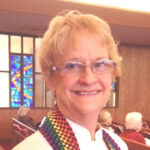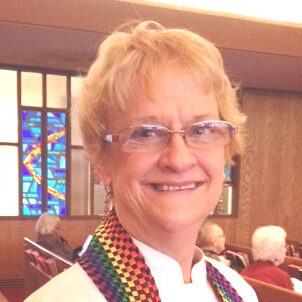Practicing God’s Presence
In the busi-ness of your responsibilities and the busy-ness of life, how do you stay in touch with God?

Psalm 46:10 says, “Be still and know that I am God.” But how do we open up to such stillness within?
I recognize this stillness in certain moments, when the illusion of “ordinary” days is drawn aside. It can happen when I’m watching or listening to birds, looking into a beloved pet’s eyes, or noticing the light on the leaves as trees sway in the wind. Any sense of chronological time drops away into an eternal “now.” I feel oneness with the Greater Whole, oneness with God, as a tiny part of God’s vast and intricate creation.
Such glimpses remind me of Brother Lawrence, whose book, The Practice of the Presence of God, has been a spiritual classic for generations. Brother Lawrence (1614-1691) was a lay brother in a Carmelite monastery in Paris. His posthumous book contains sixteen brief letters, a collection of spiritual maxims, and four conversations. While doing humble activities, he would lose himself in God. He often said that God paints Who God is in the depths of our souls. So all we need to do is open ourselves to receive God’s loving presence.
I imagine this is what happened to young Isaiah in the Bible, when he experienced God’s personal call. (Isaiah 6:1-8) Old Testament scholars say that this event most likely took place when Isaiah attended the coronation of Israel’s new king. As Isaiah sat there in the Temple, the exterior scene gave way to a deeper, inner reality of flying seraphim (Hebrew for “burning ones”), the touch of a burning coal to cleanse his lips, and God’s personal invitation to him, asking, “Who will go for us?”
His entire inward being responded with, “Here am I; send me.”
This was not a delusion. It was as surely real within him as were the royal procession happening around him in the Temple: the priests’ robes flowing past him as they processed down the aisle, and the incense swirling thick in the air.
Being with God is something we do in partnership with God. Seen in this way, it is I who thinks, wants, and does things, but at the same time it is Christ who initiates and works in and through me.1 The apostle Paul says, “It is no longer I who live, but it is Christ who lives in me. And the life I now live in the flesh I live by the faith of the Son of God, who loved me and gave himself for me.” (Galatians 2:20)
The habit of consciously being in God’s presence is a way of becoming more deeply aware of God at work in our lives. There are hundreds of practices, called “spiritual disciplines” (from the word “disciple,” which means “follower”), which can help us awake to God’s presence in our midst. For example:2
• Breath prayer is a one-sentence prayer of two phrases linked to the rhythm of breathing in and breathing out. It can express a deep personal desire and be repeated continually throughout the day. Some examples are: “Jesus Christ, / have mercy on me” or “Loving Shepherd, / bring my child home safe” or “Holy One, / keep me true to You.”
• Silence is a way of being attentive and listening for God without any interruption from noise (speaking, reading, or hearing others talk). It involves setting a period of time to isolate yourself from all sound (other than possible sounds of nature). The practice invites greater self-awareness and a deeper intimacy with God.
• Mindfulness is a state of openness to the present moment, letting go of control and becoming more alert to God. It includes observing your own thoughts and feelings without judging them and releasing worry about the past or the future. It may prompt you to savor the gift of life, connect more deeply with others and with God, or emerge with a fuller sense of wonder.
• Lectio Divina is an ancient and current practice of successive reading a specific Bible text as a way to prayerfully encounter the Living God. After quieting yourself, read the passage aloud four times. Each time you read, focus on the following:
o First reading – Read the story slowly and deliberately, noticing the plot or description.
o Second reading – Listen for a word or phrase that speaks to you and ponder its message.
o Third reading – Write down your response to what you’ve just heard from God.
o Fourth reading – Sit with God, contemplating the phrase.
• Contemplative prayer is open, restful receptivity to God, waiting for God’s presence and word. You might sit in stillness, light a candle, then offer yourself to the Light of Christ. Or you could choose a prayer word, name a deep desire, repeat a title for God, or lift up a phrase until the words disappear and you remain in worshipful silence.
In these and many more ways, you can gently explore practicing the presence of God. In God, “we live and move and have our being” (Acts 17:28). So at any given moment, you can open yourself to God’s word and living presence.
Your partner in faith,
Betsy Schwarzentraub
1 – For more on this idea, see theologian Miroslav Volf cited in Betsy Schwarzentraub, Growing Generous Souls: Becoming Grace-Filled Stewards, p. 50.
2 – Phrases from these descriptions come primarily from Adele Ahlberg Calhoun’s excellent book, Spiritual Disciplines Handbook: Practices That Transform Us.
See also: Steps to Solitude, Living from the Soul


